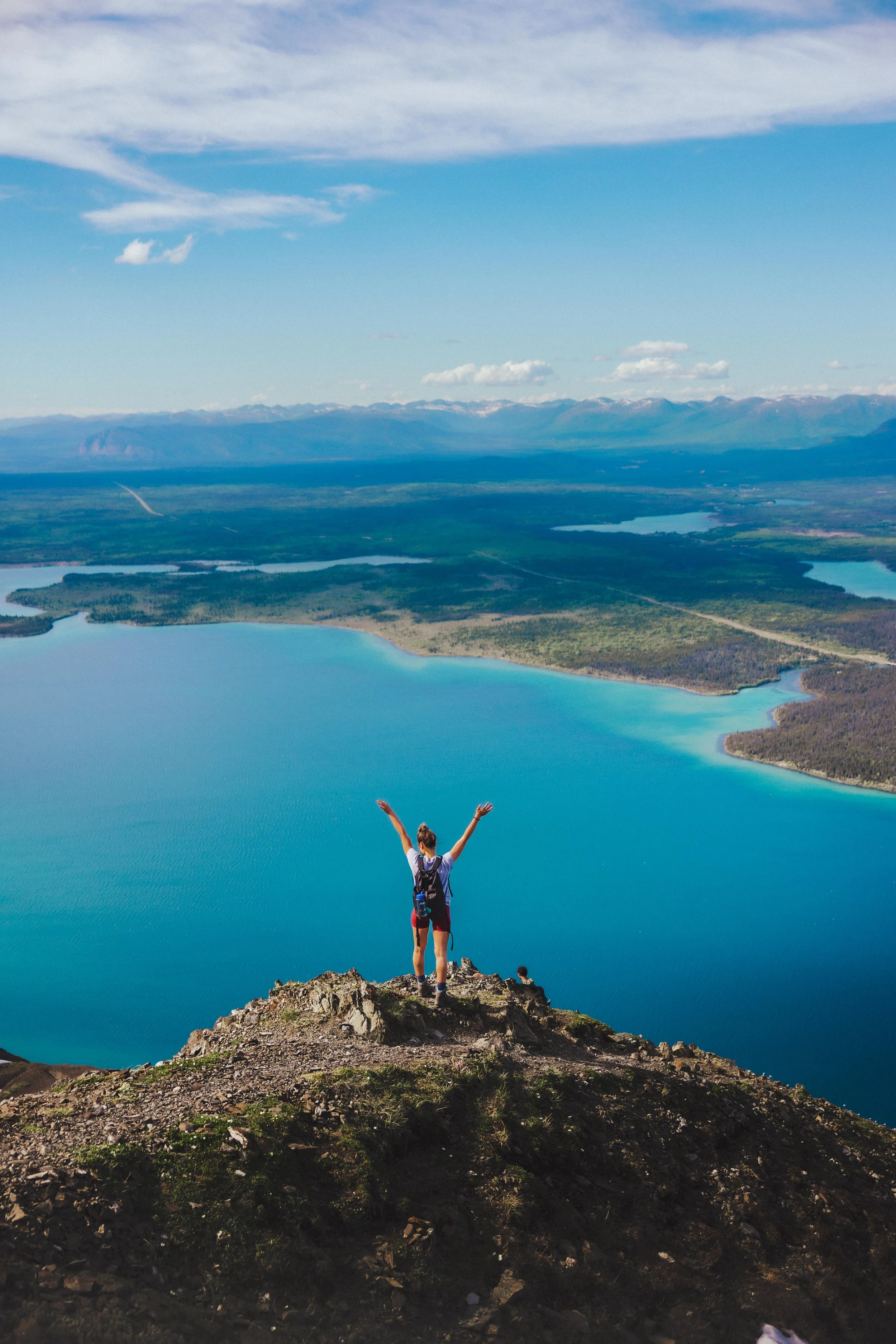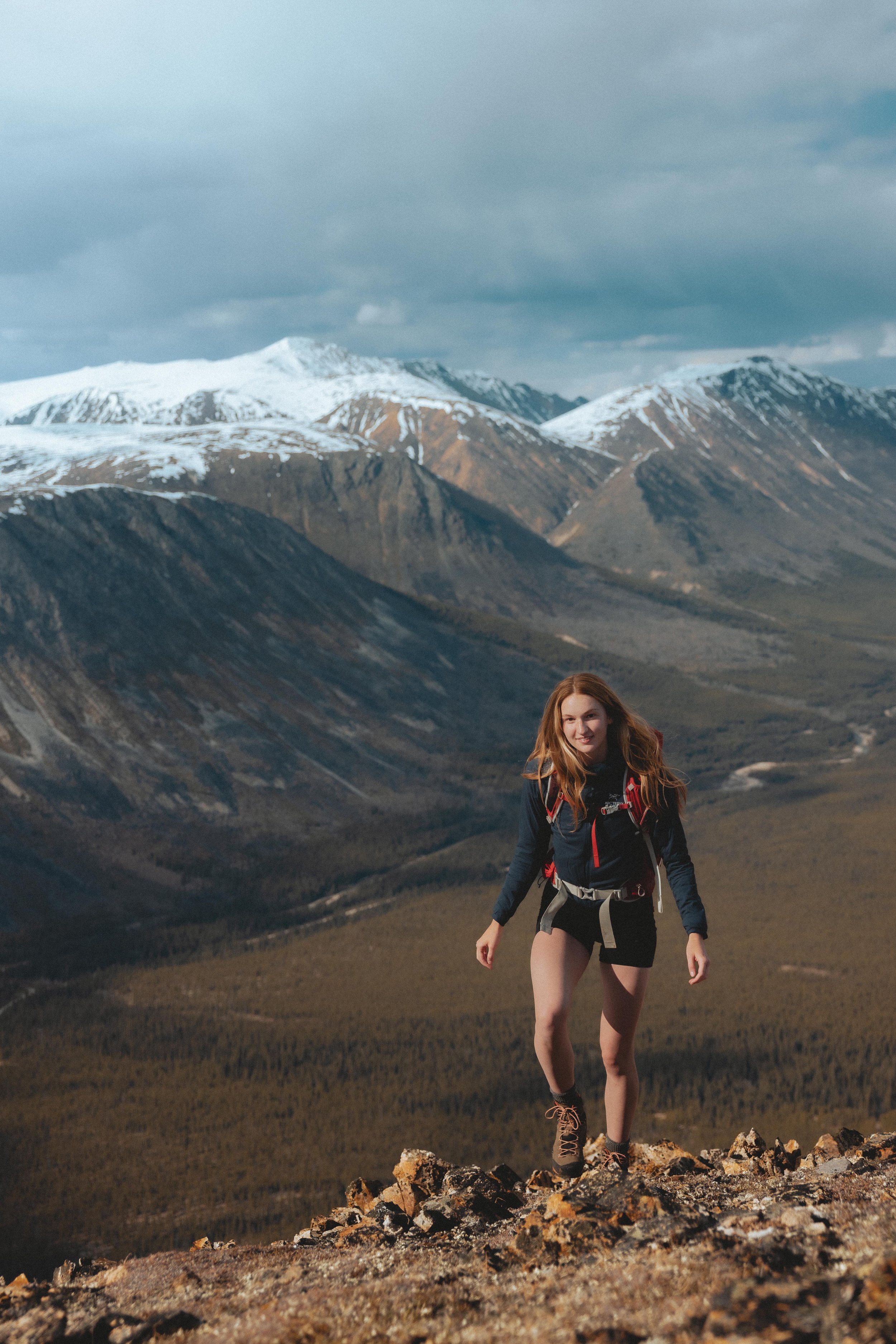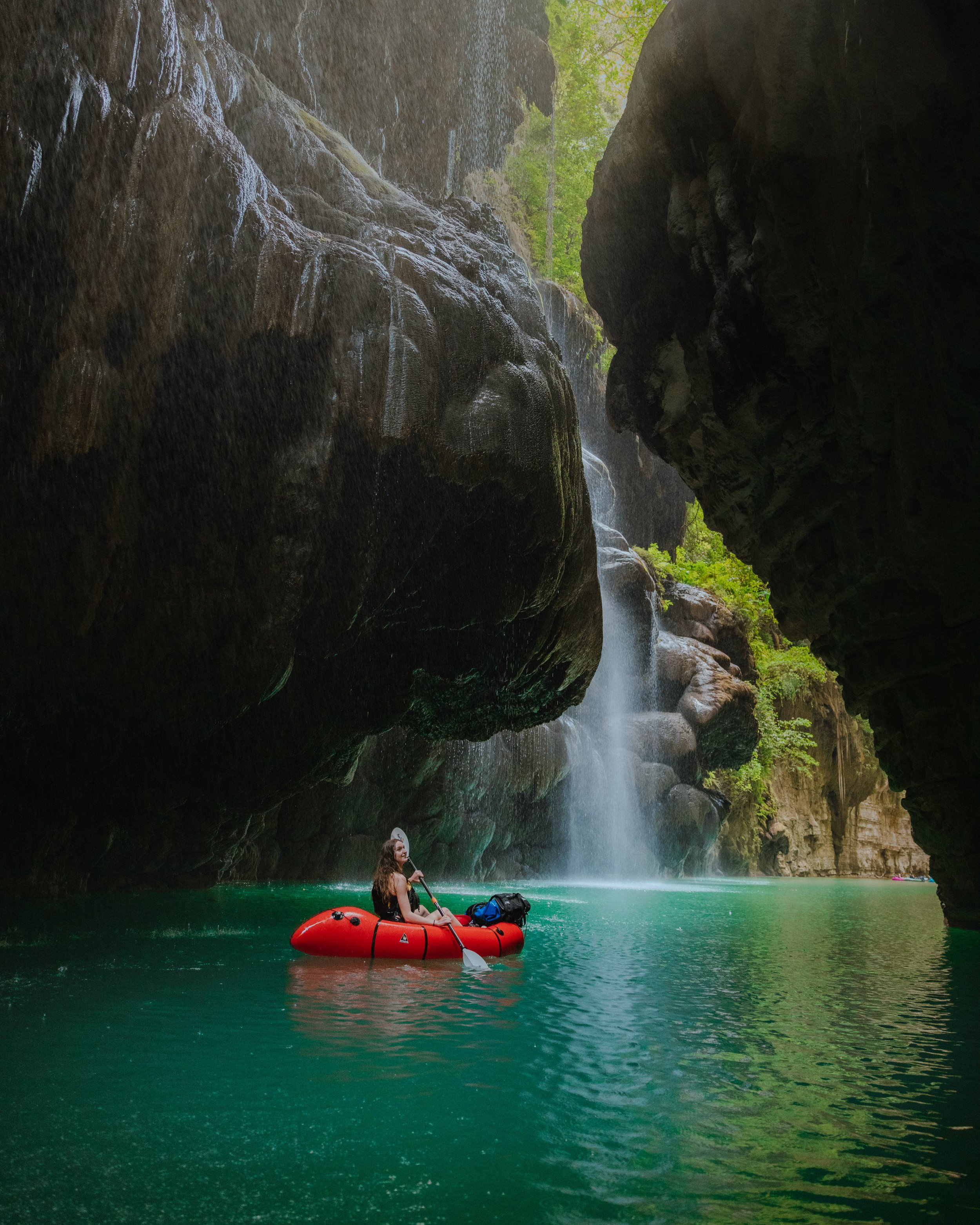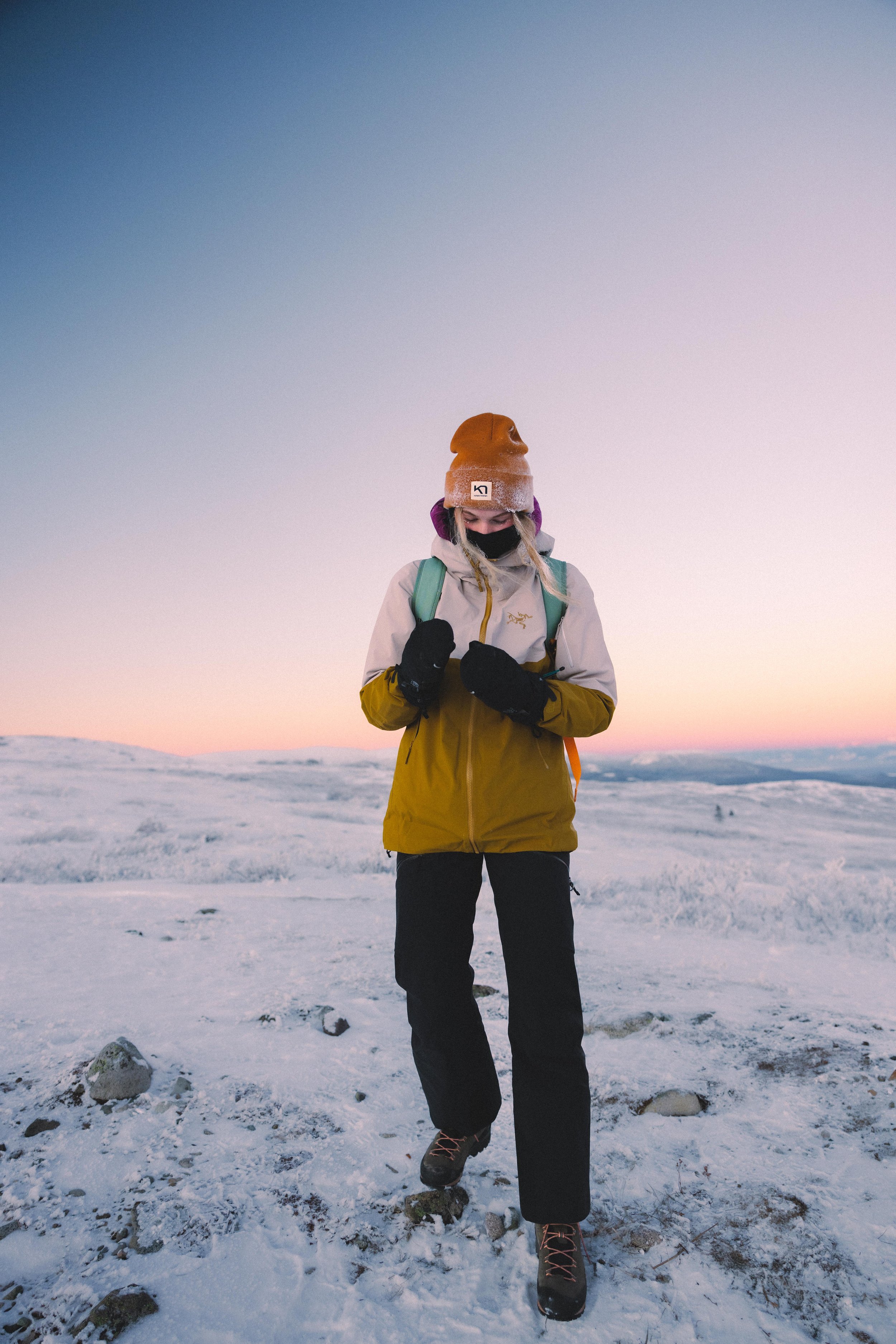My Yukon Hiking Summer Essentials
What to pack for day hikes in the Yukon and Alaska during the summer
Before we get into it, here’s some general info about hiking in the Yukon and Alaska:
Skip right to the gear:
When is the summer hiking season in Yukon and Alaska?
Every summer is different up north but typically the best time to hike is June to early September (end of August/early September is when fall colours tends to start). You can typically get out in end of May but there will still be lots of snow in the peaks; even into June you can still find some snow patches.
What to expect when hiking in the Yukon and Alaska in the summer:
The weather can be quite unpredictable and turn on a dime. I like to go into every hike with the mindset that I don’t know what to expect and pack so I’m prepared for everything. Here’s some things to keep in mind:
Summits are often about 10 degrees colder than in lower elevations.
You will likely experience heat, wind, rain and even snow at any point in the summer season.
A summer day in Yukon and Alaska can be anywhere between 10C-30C/50F-86F
Mosquitos will be around pretty much everywhere except in the alpine (thankfully).
Sometimes they are awful and sometimes they aren’t noticeable; it really depends on the year and where you are.
Expect the hiking trails to be very rugged and un-groomed.
Some hikes require creek crossings.
Very remote. On most trails it is unlikely to run into many people so you need to be self-sufficient and always tell someone your plan.
There’s likely no cell service on your hike.
Many trails are unmarked and we like it that way. Make sure you have the hiking directions as well as the GPS route with you.
But you can always count on stunning views 🙌
Bears and wildlife in the Yukon and Alaska:
There’s always a chance of running into a bear and other wildlife so always stay aware, carry bear spray and never leave food behind. That being said, I’ve lived in the Yukon my whole life and have never had a bear encounter where I needed to use bear spray.
With that all said, let’s get into what I bring on day hikes in the Yukon and Alaska🙌
Disclaimer - These are guideline from what I’ve learned through personal experience living here in the Yukon. Always use your own discretion. Some links are affiliates links which means I make a small profit if you decide to purchase from the links however it doesn’t cost you anything extra. It’s just a way to help support what I do.
What I wear on top:
Layering is key. The idea is you peel or add layers as needed. You always want to avoid sweating through your layers.
Layer 1 - Sports bra/tank: This is up to your preference but I love being able peel off layers to a tank when things start to get sweaty. Make sure you go for a quick drying material otherwise you will get chilled quickly when you stop moving.
lululemon Align™ Tank Top - I always prefer flat and wide straps to avoid chaffing with a pack on.
Layer 2 - Base layer top: Long sleeve or short sleeve depending on the weather and your preference. I like a merino wool blend for the summer but really anything but cotton will do the trick.
Voss Light Half Zip Top - My favourite long sleeve base layer for summer because it’s not too light and not too heavy.
Layer 3 - Mid layer fleece: I typically go for a lighter fleece that has a fitted cut to make layering easier.
Kari Traa Rothe Fleece Jacket - I’m loving the tighter fit and weight of this fleece for summer.
Layer 4 - Insulated layer: I bring a down or synthetic insulated layer. This might seem overkill for a day hike, but even if it’s really hot out, I always still pack this layer because when the weather turns, or if it’s cold and windy in the alpine, I’m always so grateful to have it with me.
Mountain Hardware Stretchdown Jacket - The successor of my favourite down jacket.
Arc’teryx Atom LT Hoody - My favourite synthetic layer because it offers some wind and water resistance while being very breathable (wearing in picture).
Kari Traa Ragna Jacket - A great affordable and lightweight option.
Layer 5 - Shell Jacket: A shell is the layer that protects you from the elements. You want this to be waterproof, wind proof and you want a hood. Don’t skip this. It’s definitely the most important layer in my experience. I also find this layer very useful when the bugs are brutal
Arc’teryx Beta Jacket - This is one of the more expensive options on the market but it was well worth it for me and how much use it gets
Black Diamond StormLine Stretch Rain Shell - An affordable option that will keep you dry and get the job done.
What I wear on the bottom:
It’s funny how bottoms require a lot less layers for day hikes. Depending on the weather and what the intensity of the hike is, this is what I wear:
Leggings: I wear leggings about 90% of the time on day hikes because they are so comfortable, breathable and dry relivately fast. However, they don’t really protect you from the elements and you can get scratches through them as well as bugs bites. I would say for more moderate hikes you can definitely get away with just leggings.
lululemon Align High-Rise Pant with Pockets - Forever will be my favourite leggings (wearing in picture).
Fjallraven ABISKO TREKKING TIGHTS - These are more rugged leggings with a reinforced butt and knees. I usually wear these when I know I’m bush whacking or possibly butt scooting on rocks.
Hiking pants: Honestly, hiking pants are the most practical pants to wear. I just don’t find them as comfortable or as flattering so I find I reach for these less often for day hikes. Most hiking pants will keep the elements off of you, are quick drying and prevent bugs from biting which is a win. Here’s some hiking pants that I found that I love. (Also, I’m relatively tall, 5’10 which makes it even more difficult to find pants.)
Kari Traa Voss Hiking Pant - Actually fits curves which is amazing. This pair is pretty light and has vents, huge pockets and an adjustable waist
Arc’teryx Gamma LT Pant- Really comfy and you can cinch the ankles and the waist but I find them a little on the hot side if it’s a fair weather day. (I often pack these if I’m wearing leggings in case the weather changes.)
Shorts: Definitely a saviour on a hot sunny day. They obviously offer little protection so always pack a pair of pants with you.
lululemon Align High-Rise Shorts 6” - Comfy, cute and light. On the downside, if you fall on rocks you will scrape your butt through the material.
Kari Traa Ane Hiking Shorts - Long but not too long with pockets and a tougher material.
Rain pants: I don’t always carry these with me on day hikes because I don’t really mind if my pants are wet. That being said, they typically pack really light so it doesn’t hurt to bring them if the weather is looking questionable. If doing a multi-day hike, or for hiking in the rainforests of Alaska, I would consider rain pants essential.
Black Diamond StormLine Stretch Full Zip Rain Pants - These will keep you dry and with the full side zip you can easily take these on and off without having to take off your boots.
What I wear on my feet:
Hiking Boots: Our trails are pretty rugged with lots of rocks, shale, roots, snow, etc, so I would recommend a good light-weight boot. Look for a boot with a good grip and ankle support. Go for waterproof boot; yes, this means it’s less breathable but chances are you will run into some water or rain and there’s nothing worse than hiking with wet feet. I’ve yet to find the “perfect boot” but here’s some that I’ve tried that I like:
Salomon Quest 4 Gore-tex - These are a great mid-weight hiking boot. I loved these boots and they had really amazing ankle support but broke on me within 1.5 years (I do wear hiking boots almost everyday, year round though). They were very comfortable and light and had great waterproofing. The only con for me is they didn’t last as long as I would have hoped.
Mammut Kento Guide High GTX - This is a mountaineering boot and I use them more in the winter. They’re nice for more technical hikes where you are in snowy, icy, or rocky alpine environments. Since my old hiking boots are dead, I’ve been using these for hikes while I research what I want for my next hiking boot. I’ve found when hiking on dirt, grass, rocks and mud, the boots aren’t as cushioned and don’t feel great on the feet when you are covering a lot of distance.
Trail Runners: I wouldn’t recommend trail runners for beginners because they tend to offer little to no ankle support, but these are definitely a nice and light option for day hikes especially for easier trails or seasoned hikers.
Salomon Speedcross 5 Gore-tex - I’m obsessed with these they make me feel so light and nimble. They are super grippy, light-weight and waterproof if you get the gore-tex version.
Creek crossing shoes: It’s pretty common for hikes to have creek crossings, so do your research ahead of time. You’ll definitely want something on your feet as the rocks can be quite sharp. Don’t go with slip ons or slides otherwise your shoe will likely end up floating away. You want shoes with a heal or ankle strap.
Socks: Merino wool is the way to go because it dries fast, keeps you warm, sweat wicking and prevents odour. You can get socks in different weights, I prefer the thicker cushioned socks but it’s all really personal preference. Here’s my go to brands:
What I bring on my back:
A good backpack 20L-50L - There’s nothing worse than sore shoulders from a pack. I would highly recommend a pack with a waist belt to help distribute the weight. You always want to keep what you carry with you as light as possible, even for day hikes.
Osprey Talon 44L - My favourite pack because it’s so comfortable and offers a lot of different functionality. I got the 44L because I need extra room for camera gear, but I find with the style of pack, if it isn’t full - it can be cinched smaller.
Bear Spray - I don’t go anywhere without it. You unfortunately can’t fly with it but you can pick it up locally from stores such as Coast Mountain Sports.
Bug Spray - You don’t always need it but when you do you’re thankful you have it. I go for the ones with deet despite concerns deet isn’t good for you because it actually works. A tip is to just spray a coat on your baseball hat/clothes instead of spraying it on your skin.
Water - An obvious must.
Hiking Poles - I normally bring these on steep hikes even if I don’t use them. They could get you out of a bad situation if someone gets hurt.
Black Diamond Trail Trekking Poles - Collapsable, lightweight and you can put baskets on the to use them as ski poles as well!
Buff - Optional for when it’s cold/windy.
Baseball hat
Toque - Optional for when it’s cold/windy.
Gloves - Great for when it’s cold/windy in the alpine.
Black Diamond Lightweight Screentap Gloves - These are super stretchy and lightweight but provide enough warmth and protection to keep my fingers warm.
Blister tape -
KT Tape Blister Prevention Tape - I’m very blister prone but I’ve found that this tape works the best for me.
Satellite Communication - Almost all hikes will be out of cell range so some kind of satellite communication is highly recommended.
Garmin inReach - I love the inReach because it pairs with my phone nicely, includes mapping and you can basically send messages likes texts.
Food - You burn a lot of calories while hiking so make sure you pack a lot of snacks for your day hike, here some of my favs:
Granola bars/Protein Bars
Trail mix
Sandwich
Hummus and Naan
Chocolate
Camera - Because, of course!















